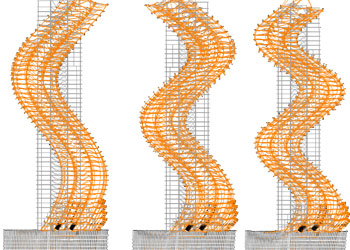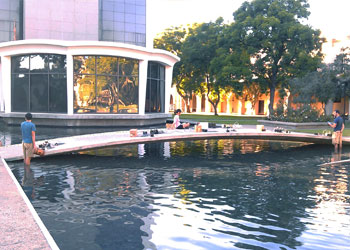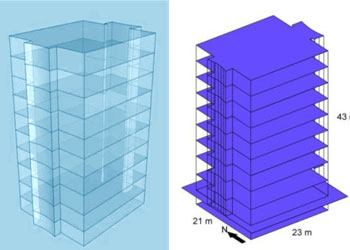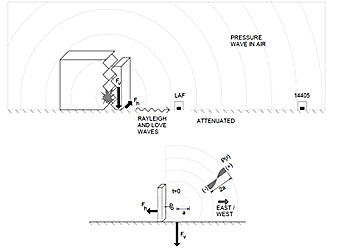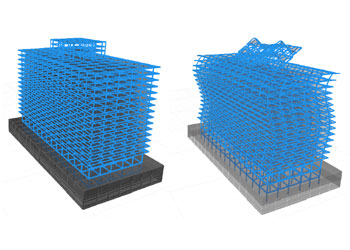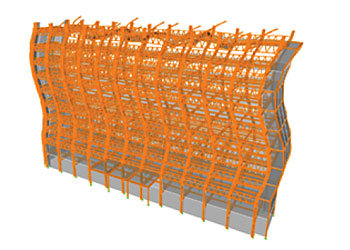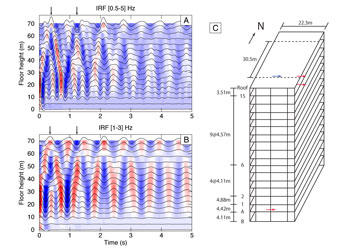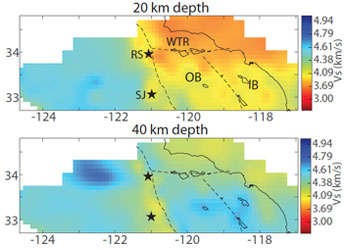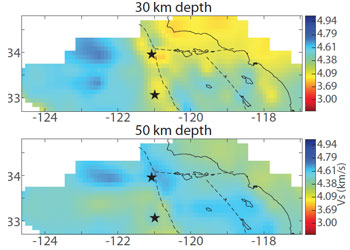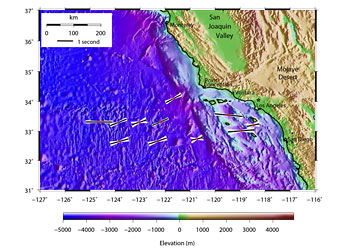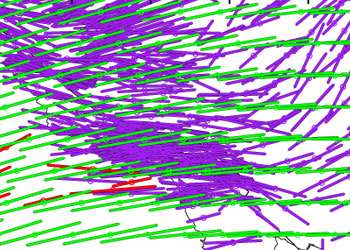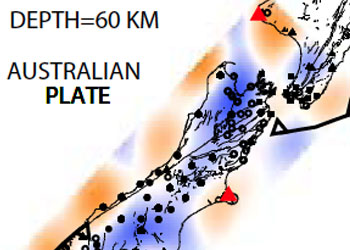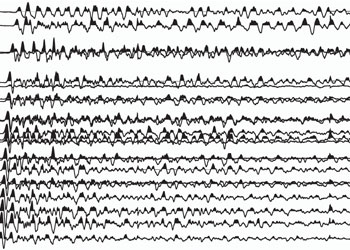Research
Earthquake Engineering
I wear two hats in my research position, one as an earthquake engineer and the other as an observational seismologist. As an earthquake engineer, my work is motivated by the recognition that commercial development of high-sensitivity, low-cost sensors is leading to a dramatic expansion in observational vibration monitoring, making it possible to image full, time-varying, seismic wavefields in buildings. I am extending wave propagation and tomographic methods developed for seismological applications to the instrumented, built environment for detection and location of shaking-induced damage events such as steel beam connection fractures and brace-element connection failures. In earthquake engineering I am developing new techniques to detect damage in buildings using different types of wave propagation responses from vibration sources. I conduct numerical and observational experiments with earthquake, explosion, wind event, and ambient vibration waveform data from sensor deployments in existing buildings.
- Structural health monitoring with the Community Seismic Network, involving members of the community who host small, inexpensive seismometers in order to achieve deployments of tens of thousands of sensors in seismically active regions. [Published Studies]
- Damage detection techniques through simulation of building response to small-scale (and visibly unobservable) damage scenarios imposed in finite-element models of existing buildings that also have sensors deployed on multiple floors recording vibration data. [Published Studies]
- Development and testing of a high-frequency method of detecting a failure event in buildings that uses the properties of reciprocity and time-reversed reciprocal Greens functions. [Published Studies]
- Application of time-domain waveform interferometric techniques for system identification of buildings using earthquake and ambient vibration recordings. [Published Studies]
- Development of multi-tiered, portable, wireless accelerometer system for instrumenting large civil structures such as buildings, bridges or dams. [Published Studies]
Seismology
As a seismologist, I am constructing frameworks to describe the geophysical environments that lead to initiation and evolution of young continent-continent collision at transpressional plate boundaries. Observations are provided by the deployment of dense arrays of seismometers in the field and on the seafloor. In both cases, our studies provide new insights into the types of failure and deformation mechanisms that can occur within the brittle-plastic spectrum of these systems, particularly within transition regions.
- Crust and mantle lithosphere 3D seismic tomographic imaging beneath the Pacific-North America plate boundary in southern California using onshore and ocean bottom seismometer data. The goal is to relate plate boundary dynamics to lateral variations in San Andreas fault and other onshore and offshore fault system geometries, and to mantle flow processes. [Published Studies]
- Lithospheric 3D seismic tomographic imaging below the Pacific-Australia plate boundary below South Island New Zealand. A related goal is to determine how upper mantle seismicity below the central Southern Alps is associated with uppermost mantle dynamics. [Published Studies]
- Tohoku tsunami wave propagation imaging using pressure gauge array data recorded offshore southern California to characterize wave velocity and scattering behavior due to seafloor structure in the Pacific Ocean. [Published Studies]
- Earthquake Early Warning "ShakeAlert" project. Developed the Testing and Certification Platform component of ShakeAlert. [Published Studies]
